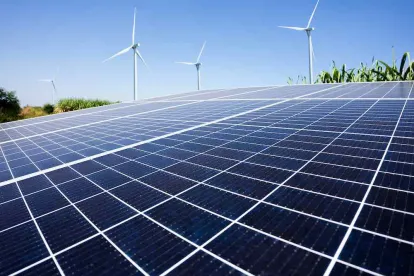The Bureau of Land Management (BLM) published a Proposed Rule on June 16, 2023, that would, if adopted, amend its existing right-of-way regulations to promote solar and wind energy development on public lands administered by BLM. The Proposed Rule would promote private solar and wind energy development applications by reducing acreage rents and capacity fees and streamlining BLM approval of rights-of-way applications. BLM estimates the Proposed Rule would reduce fees for such projects by 80 percent, helping to advance the Administration’s aggressive clean energy goals.
BLM’s proposed rule marks the latest in a series of agency actions designed to grow onshore solar and wind energy, including preliminary updates to its programmatic environmental impact statement for utility-scale solar development and potentially expanding its existing solar program to include five additional states: Idaho, Montana, Oregon, Washington, and Wyoming.
Comments on the Proposed Rule are due August 15, 2023.
Key Takeaways
Clarifying Terminology: Under the Proposed Rule, “solar and wind energy lease” would refer to any right-of-way within a designated leasing area, and “right-of-way grant” would refer to any right-of-way outside of a designated leasing area.
Reduced Rents: The Proposed Rule would significantly reduce applicable rents and fees for solar and wind energy projects on BLM lands. BLM estimates that rents and fees would be reduced by around 80 percent.
Expanded Leasing Authority: The Proposed Rule would expand BLM’s authority to issue solar and wind leases and right-of-way grants without going through a full auction and to accept non-competitive applications if in the public interest.
Domestic Source and Labor Standards: Consistent with the Biden Administration’s goals to promote domestic manufacturing and support organized labor, BLM also proposes fee adjustments that would encourage solar and wind projects on BLM lands to use domestically-manufactured equipment, to pay prevailing wages, and to support union apprenticeship programs.
Background
The proposal is significant for renewable energy development in the twelve Western states and Alaska, where the BLM administers nearly 250 million acres of public lands that contain some of the best renewable energy resources in the region.
Under the Federal Lands Policy Management Act of 1976 (FLPMA), BLM must require right-of-way holders to “pay in advance the fair market value” for public land use. The Energy Policy Act of 2020 included a new statutory directive, requiring BLM to reduce wind and solar rental and capacity fees if it determines that they are above fair market value, impose economic hardships, or are otherwise non-competitive. The Proposed Rule carries out this new statutory directive.
Currently, BLM charges both a per-acre rent for solar and wind leases and a capacity fee based on the project's nameplate capacity. In the Proposed Rule, BLM concludes that these existing rates impose economic hardship and limit commercial interest in solar and wind energy project development. BLM argues that more wind and solar energy projects would be developed on public lands by reducing rents and fees. In particular, BLM believes the new rules would encourage smaller projects and projects that would not otherwise be built because excessive fees undermine their economics.
Under the Proposed Rule, BLM would require lease and right-of-way grant holders to pay in advance either an acreage rent or a capacity fee. Further, it would change the basis for the capacity fee from the current rule, which bases the capacity fee on the nameplate capacity of the project, to a capacity fee based on the actual energy output of the project. This fee would be reduced by 80 percent through 2036 and then would be adjusted upward based on a fixed annual adjustment factor. This change is particularly important for wind and solar projects because the actual energy production of these projects is generally only a fraction of their potential output based on nameplate capacity. Acreage rent based on the per-acre value of leased land as pasture would be the minimum charge imposed on land in a given right-of-way, a significant reduction from the current approach.
As noted above, the Proposed Rule also aims to streamline BLM wind and solar leasing and grant issuance. It also considers incentives to promote the use of American-made renewable energy parts and materials, including additional reductions to capacity fees. The agency expects this incentive will stimulate demand for domestic production of these types or parts and materials. BLM seeks input on possibly further reducing capacity fees up to 20 percent based on the use of union labor in project construction.
Next Steps
The Proposed Rule is likely to create substantial benefits for renewable energy developers seeking to harness renewable resources on Western public lands. Those interested in developing renewables on public lands should therefore consider commenting on the Proposed Rule. Comments on the Proposed Rule will be accepted through August 15, 2023, and BLM will also host three public meetings on the Proposed Rule.







 />i
/>i
